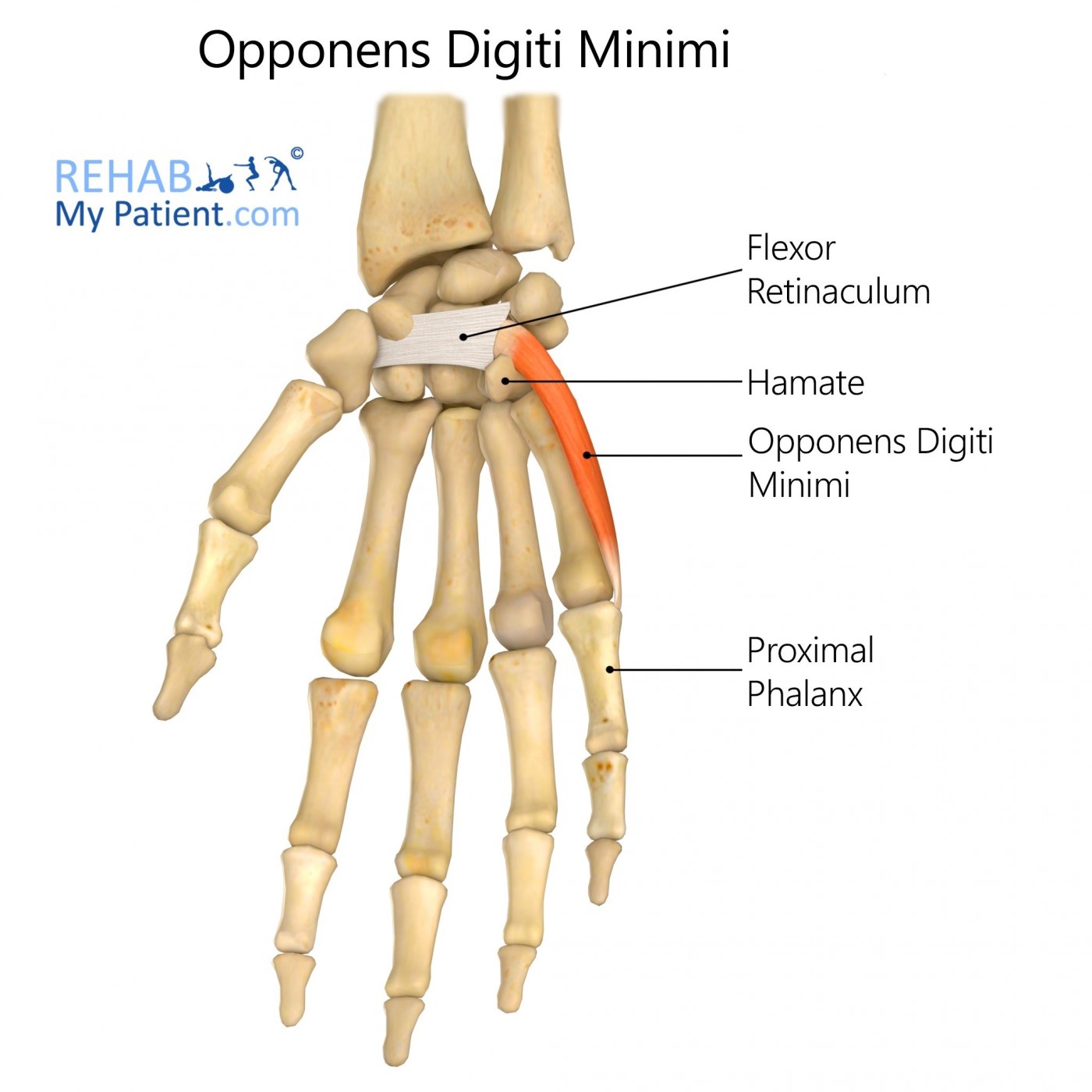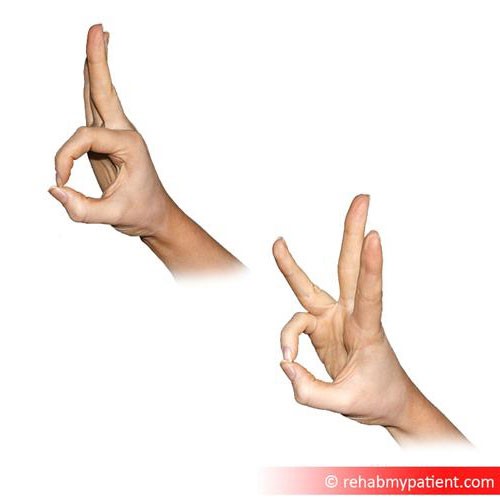
General information
Opponens digiti minimi is part of the hypothenar group of the hand muscles.
Literal meaning
The muscle that moves the little finger to the opposite side of the hand.
Interesting information
Opponens digiti minimi is also sometimes referred to as opponens digiti quinti in the literature. It is a triangular shaped muscle that is deep to flexor brevis minimi digiti, abductor minimi digiti, and palmaris brevis. Opponens digiti minimi is one of the three hypothenar muscles.
The hypothenar muscle group is responsible for the movement of the little finger. Opponens digiti minimi in particular controls lateral rotation and flexion of the 5th metacarpal (little finger) at the carpometacarpal joint. It allows opposition of the little finger so that it touches the thumb.
Opponens digiti minimi is susceptible to overuse injuries as a result of activities like typing on a computer or playing the piano for long periods of time. Strain in this muscle usually presents as pain in the fleshy pad of the hand near the little finger. If the muscle injury is significant, patients may not be able to tolerate even small amounts of pressure exerted on the little finger side of the hand (hypothenar eminence). The pain may radiate upwards into the finger. Injury to opponens digiti minimi will diminish opposition of the little finger to meet the thumb.
Origin
Hook of the hamate bone and flexor retinaculum.
Insertion
Anterior side of the 5th metacarpal.
Function
Opposes the joint of the little finger toward the thumb.
Nerve supply
Ulnar nerve (C8, T1).
Blood supply
Ulnar artery (deep palmar branch).

Relevant research
The causes and physiology of carpal tunnel syndrome are still poorly understood. Electrophysiological study of the surrounding anatomical structures show that muscles innervated by the median never and hypothenar muscles (including opponens digiti minimi) are all generally affected in early carpal tunnel syndrome.
Horiguchi G, Aoki T, Ito H. (2011). “Characteristics of the electrophysiological activity of muscles attached to the transverse carpal ligament in carpal tunnel syndrome”. J Nippon Med Sch. 78(4):208-13.
Surgical exploration of cadaveric hands have revealed U-like neural anastomoses to be characteristic of most opponens muscles. Relative muscle spindle abundance is also greatest in opponens muscles which is likely for the purpose of controlling very fine movements. Nerve distribution mapping has important implications for hand surgery and muscle transplant surgeries.
Xie P, Jiang Y, Zhang X, Yang S. (2012). “The study of intramuscular nerve distribution patterns and relative spindle abundance of the thenar and hypothenar muscles in human hand”. PLoS One. 7(12):e51538.
Opponens digiti minimi exercises
Since opponens digiti minimi is responsible for opposing the little finger, this is precisely the motion you should utilise to isolate and strengthen the muscle. The simplest way of doing this is to simply alternate between extending all of your fingers and then bringing your thumb and little finger together while keeping the other three fingers fully extended. You can perform this exercise almost anywhere – at home, at work, even on the subway. To add resistance, you can use the fingers of your opposite hand to oppose the movement. You could also grip something slightly pliable in your hand like a stress ball and use that to add resistance. Try repeating this exercise for five full minutes every day.

Sign Up
Sign up for your free trial now!
Get started with Rehab My Patient today and revolutionize your exercise prescription process for effective rehabilitation.
Start Your 14-Day Free Trial